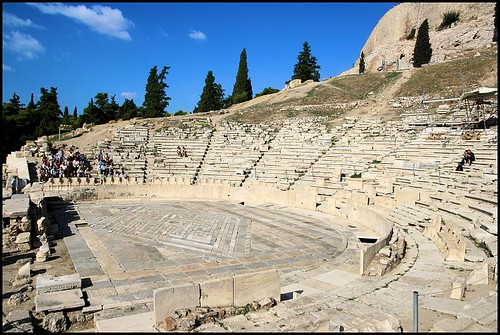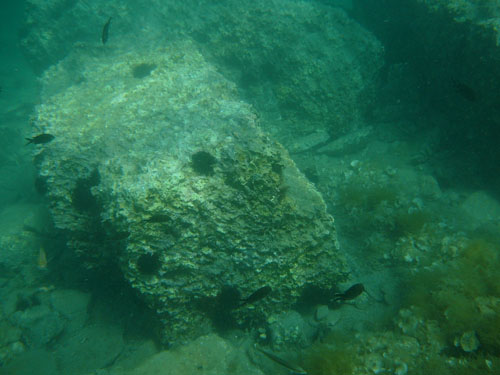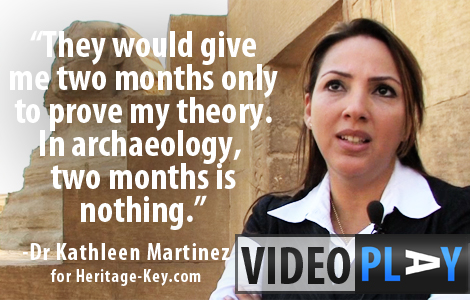The ‘birthplace of drama’ – the Theatre of Dionysus, located on the south slope of the Acropolis – is to be partially restored in a 6 million project that is set for completion in 2015. The ancient open-air theatre in Athens saw the premire of many of the great dramatic works written during the ‘golden age’ of Greek Tragedy. Famous ancient playwrights – such as Aeschylus, Euripides, Sophocles and Aristophanes – took part in competitions staged twice yearly at the Dionysus theatre; the City Dionysia festival during the spring and the Lenaia in wintertime. The limestone and marble version of…
-
-
Thanksgiving is one of the most ‘famous’ American holidays known to us in Europe, and when it’s mentioned a turkey instantly springs to mind. The turkeys sacrificed to the stomach-gods during this ‘harvest festival’ might be native, but many of the other habits were brought over from the Continent. Take the cornucopia – the ‘horn of plenty’ – for example, a common symbol food and abundance all over the world, dating back to the 5th Century BC and for which we need to thank the Greeks. The cornucopia is one of the typical symbols for a harvest festival. A horn…
-
Underwater archaeology may still be in its relative infancy, but that hasn’t stopped it making some of the world’s biggest recent discoveries. From Cleopatra to ancient plonk, there’s plenty more under the sea than a load of old shipwrecks – though they can be pretty spectacular too. Even Egyptological legend Zahi Hawass is getting a piece of the action, scouring the Nile for ancient treasure. So we thought we’d strike while the iron’s wet and bring you a top ten of the world’s underwater archaeology sites. If you think we’re talking rot, or if there’s anywhere we’ve missed, don’t hesitate…
-
Description Dr Kathleen Martinez, a young archaeologist from the Dominican Republic, has been excavating a site near Alexandria in the search for the tomb of Cleopatra. After being given permission to conduct a dig at the site for 2 months, Dr Martinez’s team have discovered two chambers which has won them the right to continue the dig into the next season. Describing the tomb that was discovered at Taposiris Magna, Dr Martinez remains confident that she will uncover the tomb of Cleopatra and Marc Anthony. Click here to read the accompanying blogpost for this video, and watch Dr Zahi Hawass’…
-
Thirty years in the making, the 130 million euro New Acropolis Museum is a stunning, if controversial, addition to Athen’s famous architectural landscape and at the same time a provocative statement of intent by the Greek people. In a fascinating talk in Dublin last night, Professor Dimitrios Pandermalis, President of the new museum took an enthralled audience on a tour of the history, architecture and intentions of the spectacular building. The talk, entitled ‘Collections Present and Absent at the New Acropolis Museum, Athens‘ was hosted by the National Museum of Ireland, organised by the Irish Museums Association and was attended…
-
Thirty years in the making, the 130 million euro New Acropolis Museum is a stunning, if controversial, addition to Athen’s famous architectural landscape and at the same time a provocative statement of intent by the Greek people. In a fascinating talk in Dublin last night, Professor Dimitrios Pandermalis, President of the new museum took an enthralled audience on a tour of the history, architecture and intentions of the spectacular building.
-
This week the film The Twilight Saga: New Moonis being released, fuelling vampire mania around the world. While teenagers go completely nuts over the film’s hunky vampire Edward (Robert Pattinson) one wrote ‘bite me’ on her face as she queued with 5,000 others to see him in London last week other die-hard fans of the Twilight books, written by Stephenie Meyers, are also descending on the small hill-top town of Volterra, in Tuscany, where some of the action of the film is set (even though filming actually took place in Montepulciano, 70 miles away). As a result, hordes of teenagers…
-
It’s the most exciting project in Egypt, and one that’s captured the hearts and minds of people all over the world: could Kathleen Martinez have discovered the tomb of Cleopatra? The Dominican expert certainly thinks so, and tells Heritage Key all about it in this special video. A Long Route to Egypt It has taken Dr Martinez ten years to convince herself Taposiris Magna, just outside Alexandria, is the famous queen’s final resting place. And she knew from the off she had to get out in the field herself to have any chance of finding the tomb. “I needed to…
-
Following on from the amazing high resolution satellite images of the Pyramids of Giza, it’s worth noting that the Pyramid is a structure that is seen across the world. The pyramid form was a popular one in ancient times – when you mention the Pyramids, people will instantly think of the Ancient Egyptians, and the Great Pyramid of Giza. But many civilisations adopted the pyramidal form, from the Greeks and Romans to the Chinese and Mesopotamians! The primary reason for this would be the structural form of a pyramid – the majority of the construction material that would be used…
-
The seas off the coast of Montenegro are largely under-explored by archaeologists, but a school-boy’s discovery could put one site near the city of Bar on the archaeological map once and for all. When 16-year old Michael Le Quesne, from Buckinghamshire, was snorkelling at the bay of Maljevik in September, he came across what looked first of all like some round stones two metres below the surface. Many people might have thought nothing of it and would have snorkelled happily on, preferring to look for fish instead. But Michael had obviously learned a thing or two about old ‘stones’ at…





